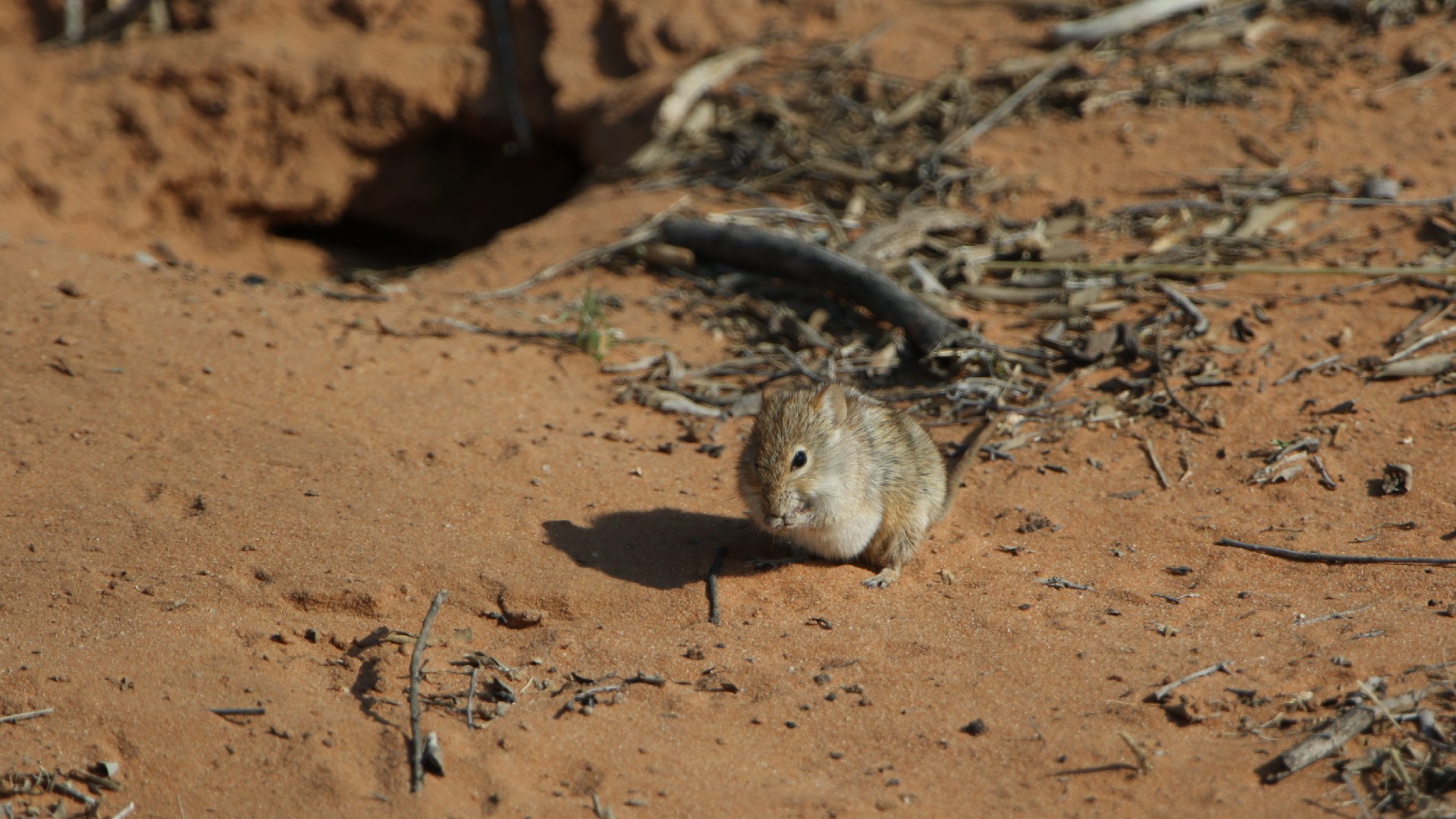Four-striped grass mouse
A species of Striped mice, Also known as Striped fieldmouse Scientific name : Rhabdomys pumilio Genus : Striped mice
Four-striped grass mouse, A species of Striped mice
Also known as:
Striped fieldmouse
Scientific name: Rhabdomys pumilio
Genus: Striped mice
Content
Description People often ask General Info
 Photo By Derek Keats , used under CC-BY-2.0 /Cropped and compressed from original
Photo By Derek Keats , used under CC-BY-2.0 /Cropped and compressed from original Description
The stripe mouse (Rhabdomys pumilio) is a rodent from the genus stripe mice (Rhabdomys) that occurs in the dry grasslands and savannas of southwestern Angola, Namibia, Botswana and western South Africa. Until 2003, the other species of the genus, R. dilectus, which occurs more to the east and north, was also counted as R. pumilio, but genetic data indicate that the two are separate species. R. pumilio also has a lighter coat and he always has 48 chromosomes, while R. dilectus has a somewhat darker coat and can have both 46 and 48 chromosomes. R. pumilio is also somewhat larger. The total length is 20 to 26.4 cm, the tail length 9.5 to 12 cm and the weight 32 to 55 grams.
People often ask
General Info
Lifespan
2-3 years
Diet
Four-striped grass mouse can be described as omnivorous with a propensity for a plant-based diet. It primarily feeds on seeds, herbs, and grasses. Additionally, it will consume insects, particularly during periods of food scarcity.
Appearance
Four-striped grass mouse is a small rodent, with a slender body covered in short, soft fur. Its dorsal fur is olive-grey, transitioning to a lighter underbelly. It bears a distinctive dark stripe running along its flank. Four-striped grass mouse is notable for its long, naked tail comparable in length to its body and a small, sharply pointed snout.
Behavior
Four-striped grass mouse are notably diurnal, primarily foraging during daylight hours. They are socially monogamous, remaining in the same geographic area with a single mate. Four-striped grass mouse construct complex, multi-entrance burrow systems and display high degrees of territoriality, driven predominantly by males. This species is distinguished by its unique foot-drumming display, a vocalization method employed during mating and territorial disputes.
Population
Stable
Scientific Classification
Phylum
Chordates Class
Mammals Order
Gnawing mammals Family
Murids Genus
Striped mice Species
Four-striped grass mouse